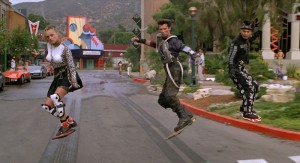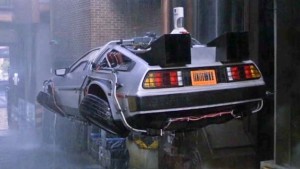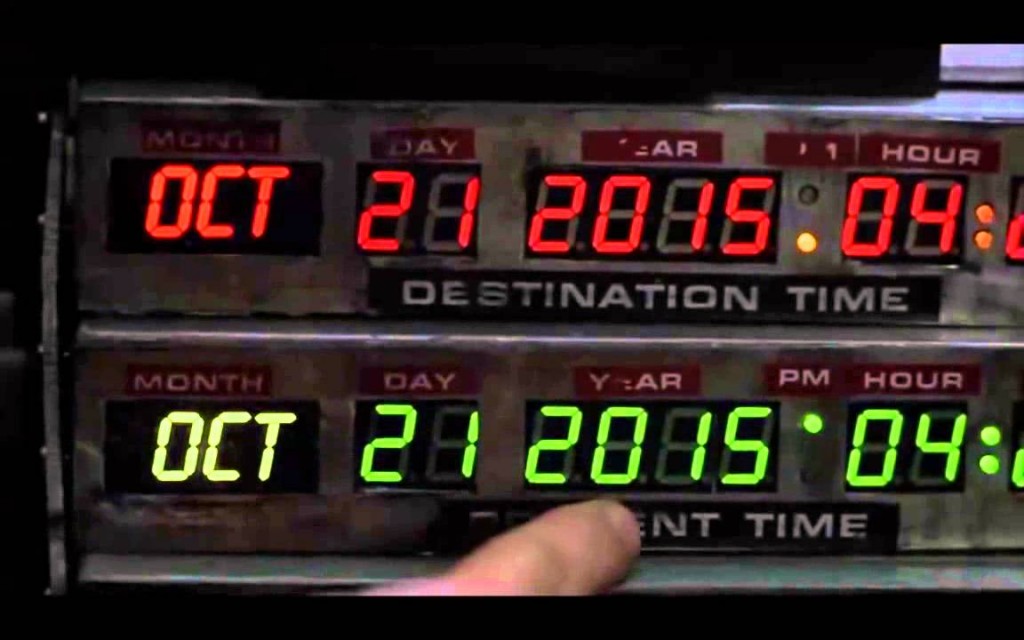Welcome to the Future
Maybe you’re not aware of this, but science fiction lovers, especially followers of the 1980s movie series Back to the Future recently marked a special day. Marty McFly, a typical American kid, with the help of his neighbor, the eccentric inventor Doc Emett Brown, journeys through time and tries to change the course of his life by interfering with events that occurred or were destined to occur. Guess which date Marty and Doc fly to in the second episode of the series? Yes, you guessed right: October 21, 2015. The future is already here. It’s interesting to see how the movie’s writers envisaged the future. There were hovercars – Seen one of those lately? (I’d love one that would help me get through rush hour…), hoverboards (still a novelty), shoes that lace themselves (who on earth needs them?), and a family sitting around the table with their eyes glued to some screen (seems most unlikely, doesn’t it?) |
   |
| Anyone spot the Internet or the smartphone, perhaps the most influential developments of our time? The writers didn’t predict such things even in their wildest imagination. However much we try to predict the future, it will always surprise us… Which makes me wonder what does the future hold in store for the world of translation? Well, if we’re talking about movies, here is a creative suggestion from the movie The Hitchhiker’s Guide to the Universe – the Babel Fish, a type of fish that you stick in your ear and it interprets what is being said. |
| I’m not sure that we at Lichi Translations would adopt this method – I prefer fish in the ocean and not in my ear, but as the owner of a translation company, the question of where the world of translation is heading to is certainly one that concerns me. Many years ago I worked for an American company called Meaningful Machines. The company developed automatic translation technologies. The aim was to create a machine that would mimic the workings of the human brain and learn the language by itself. At present the field of artificial intelligence is widely researched, but back then it was at a very early stage of development. Practically speaking, what I did was to manage large teams of translators in a range of languages. It was a fascinating period, with a touch of pioneering spirit. It also served as a springboard for my business, helping it grow from a one-woman show, in which I did most everything, namely translating and interpreting into Chinese, into a company that employs other translators. Even though the American company didn’t bring about a revolution, the technology it developed was one of the milestones that led to the translation software that we’re familiar with today. Can sophisticated software truly replace the work of a human being, a skilled translator who is aware of all the subtle nuances of the language that is his mother tongue? Is a machine capable of teaching itself what a human brain learns in the course of a lifetime? Researchers are divided on the issue: some are of the opinion that a fully automated translation, unaided by the human brain, is impossible, while others think that it is possible but admit that it will take years until a machine is able to produce a virtually flawless translation. In the last few decades many professions have disappeared (anyone seen a milkman recently?), but I still believe that my translators don’t have to worry about their jobs yet – the human brain will continue to set the standard in the translation business for many years to come. Now and then Google Translate crops up when I’m talking with clients. Google Translate is a useful tool and it’s improving all the time, but would you really entrust the translation of an important, complicated text with nuances of language into the clumsy hands of Google Translate? |





Leave a Reply
Want to join the discussion?Feel free to contribute!